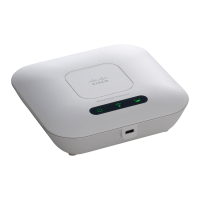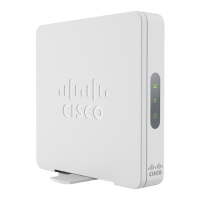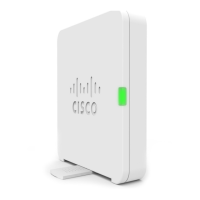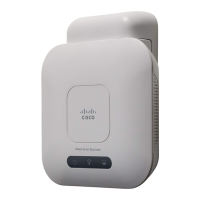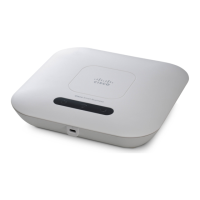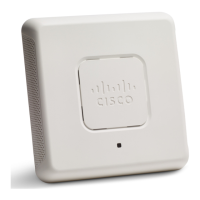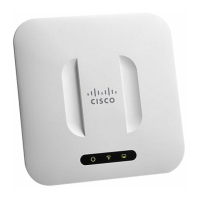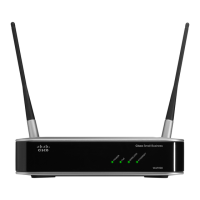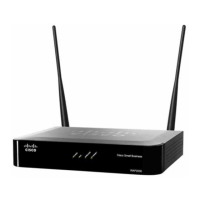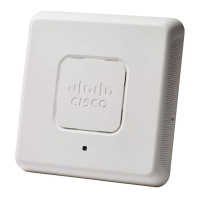• Enable — This option is checked by default.
• BSSID — Select the VAP (2.4GVAP 0 or 5G VAP 0) to enable.
• Mobility Domain — Specifies the Mobility Domain identifier (MDID) of the FBT VAP. The MDID is used to
indicate a group of APs within an ESS, between which a STA can use fast BSS transition services. Fast BSS transitions
are allowed only between APs that have the same MDID and are within the same ESS. They are not allowed between
APs with different MDIDs or in different ESSs.
• FT Mode — Fast Transition protocol allows Mobile Station (MS) to fully authenticate only with the first AP in the
domain (the group of APs that support FT Protocol and are connected over Distribution System (DS)), and use
shorter association procedure with the next APs in the same domain. Choose one of the following methods of FT:
• Over Air — In the Over Air method the Mobile Station communicates over a direct 802.11 link to the new
AP.
• Over DS — In the Over DS method the MS communicates with the new AP via the old AP.
• R0 Key Holder — Specifies the NAS identifier to be sent in the radius Access Request Message. The NAS Identifier
is used as R0 Key holder ID.
• R1 Key Holder — Specifies the R1 key Holder ID that names the holder of PMK-R1 in the authenticator.
• Remote Key Holder List — Select a Remote Key Holder List from the drop down menu that you have created.
Step 4 Click Apply.
To delete or modify a roaming setting, select it and then click Delete or Edit.
After configuring the FBT settings, click Apply to save the settings. Changing some settings might cause the
AP to stop and restart the system processes. If this happens, wireless clients will temporarily lose connectivity.
We recommend that you change AP settings when the WLAN traffic is low.
Note
Configuring Remote Key Holder List Profiles
To configure Remote R0 Key Holder List profiles:
Step 1 Select Fast Roaming> Remote Key Holder List Profile.
Step 2 Click ✚ to add a new profile or edit to modify an existing profile. The Remote Key Holder List Profiles page is displayed.
Step 3 Specify a name for the Remote Key Holder List Profile.
Step 4 Configure the following parameters. A maximum of 10 entries of R0 Key holders are allowed to be configured per VAP.
• MAC Address — Enter the destination's VAP MAC address which is the R0 key holder. The RRB PULL message
is sent to this AP MAC address to fetch the PMKR1 key. This MAC address must be unique across all the VAPs.
• NAS ID — NAS ID configured on the destination FBT enabled VAP.
• RRB Key — Key used to encrypt RRM protocol messages.
Cisco WAP150 Wireless-AC/N Dual Radio Access Point with PoE / Cisco WAP361 Wireless-AC/N Dual Radio Wall Plate Access Point with PoE
70
Fast Roaming
Configuring Remote Key Holder List Profiles
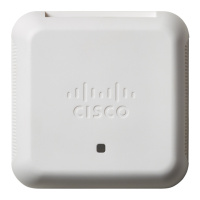
